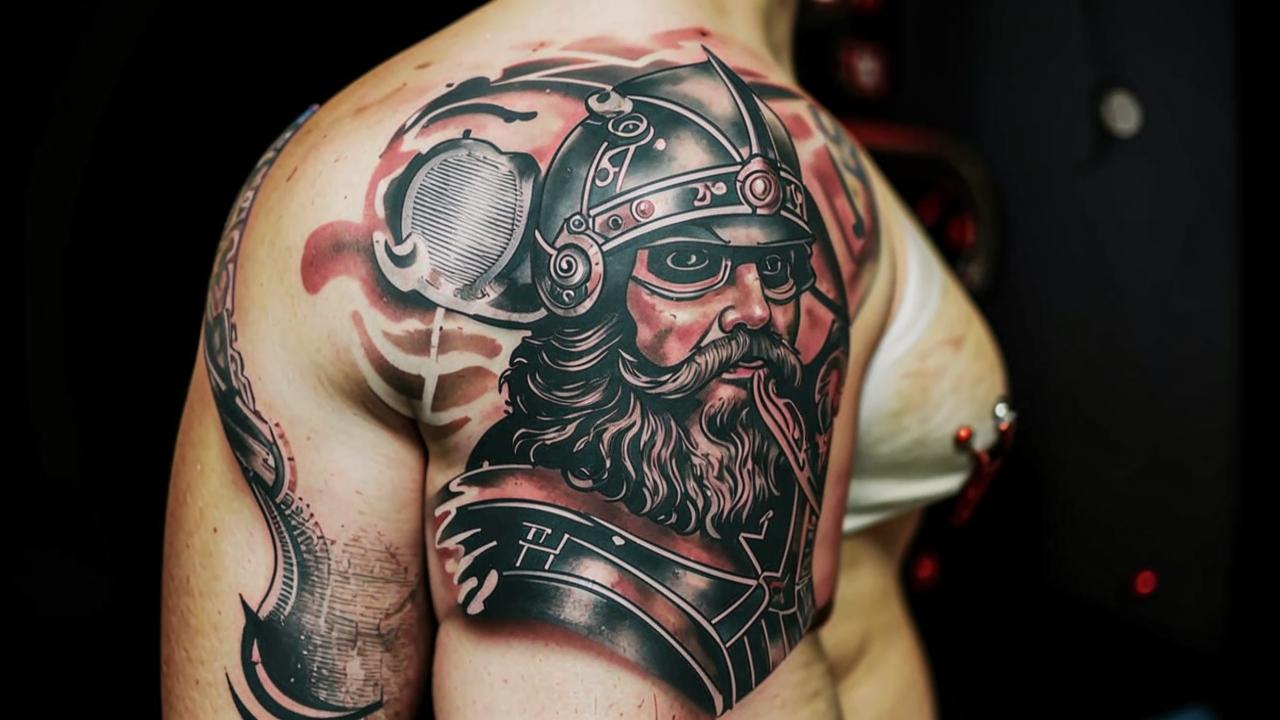Tattoos are not just drawings that help you stand out and show yourself against others. Many people put a lot of meaning into their sketches. For them, the process of getting a tattoo is akin to a sacred act. The chosen tattoo helps to demonstrate their identity, connection with the past, learn the history of the family and even join a certain culture.
What do fans of Slavic culture like to imprint on their bodies? What meaning do they put into tattoos?
The meaning of tattoos for the Slavs – then and now
Tattoos have a great significance in Slavic culture in both historical and contemporary contexts. Here are a few aspects that illustrate this.
1- Historical significance
In ancient times, tattoos played an important role in Slavic culture. They were a symbol of status, of belonging to a community and tribe, and could also carry magical or religious significance. Tattoos were used for protection from evil forces.
2 Elements of folk art
Tattoos used in Slavic culture often contained folk art elements such as patterns, symbols and images. The drawings reflected mythological representations and important aspects of the people’s life: weddings, birth of children, initiation rites.
3. Continuation of traditions
In modern times, tattoos continue to be a way of expressing one’s identity and connection to ancestral heritage. They can be used as symbols that are rooted in historical and cultural contexts.
4- Individual expression
For some, tattoos have become a way of self-expression. The drawings allow them to display their beliefs, lifestyle, preferences, and hobbies.

5. Symbolic meaning
Tattoos can also reflect inner beliefs. Still some people believe that drawings protect from troubles and diseases, bad forces, spirits.
That is, tattoos serve not only as decoration, but also as a way to preserve and reflect traditions and values associated with ancestors.
Meanings of Slavic tattoos
Slavic tattooing traditionally includes the use of a variety of patterns and symbols. Each carries a special meaning.
1. Sun
The sun is one of the most common symbols in Slavic mythology. It represents life, strength and fertility. The sun is often depicted to show its bright, good sides.
2. Perun’s hammer
This symbol is associated with the god Perun, the god of thunder and lightning. It is often depicted in the form of a warrior. It is a demonstration of strength, courage, valor and masculinity.
3. Witch
In Slavic mythology, witches were considered priestesses associated with magic, nature and female energy. The image symbolizes a reflection of wisdom or connection to the environment.
4. trident
This symbol includes the image of three prongs. It is often associated with the god of water, protection and strength. It can also be associated with elements of mythology.
5. Runes
Runes are ancient symbols and letters used in Slavic writing and magic. Each carries its own meaning. They can be used in tattoos for protection from dark forces. Also runes are the personification of wisdom or connection with ancestors.

Rituals and ceremonies
Tattooing among Slavs was often accompanied by special rituals and ceremonies, including prayers that invoked higher powers for protection.
Tattoos were also important for marking belonging to a particular community or tribe. They distinguished a person and showed their connection to a particular group of people.
Many of the tattoos with Slavic symbols were associated with the worship of the elements and natural forces. They could reflect respect for the earth, the sky, and different life cycles.
The Slavs had special traditions of drawing for different ages, including rites of passage and initiation – the transition from adolescence to adulthood.
The influence of Slavic symbols now
Slavic symbols play a significant role in modern tattoo culture. These ancient symbols and patterns have become popular among people who seek historical and cultural connection through their tattoos.
1. Symbolic Meaning
Symbols such as the perunov hammer, runes, and others reflect spiritual and cultural ties to Slavic roots. Many people continue to believe that drawings can protect and help choose the right path in life.
2. Connection to ancestors and traditions
For many people, tattoos using Slavic symbols become a way to connect with their ancestors and traditions. It is a reflection of respect for ethnic roots and a desire to preserve the heritage of their people.
3. tattoos as art
Symbols from Slavic mythology and culture also attract people with their aesthetic component. They have become an object of interest as unique and colorful patterns.
4- Historical Research
Some people use tattoos with Slavic symbols as a way to explore the history and culture of their ancestors. It becomes part of their personal journey to find their roots.
Slavic symbols have influenced the modern tattoo industry. They are a way of expressing cultural identity and aesthetic preferences.





